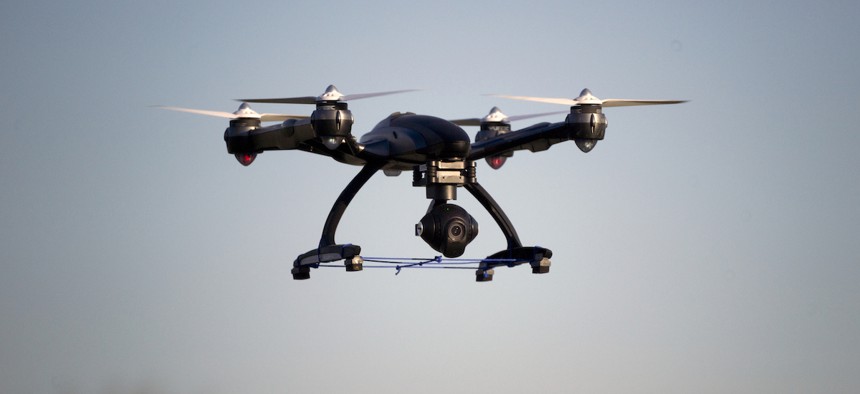Law enforcement taps drones to improve response times and safety

Kypros via Getty Images
By allowing drone operators to listen in on 911 calls in real time, a Georgia police department aims to enhance public safety operations.
Law enforcement agencies across the nation are increasingly turning to drones as first responders to improve public safety missions, relying on their advanced capabilities to enhance situational awareness and communication for streamlined operations.
In Georgia, for instance, the Dunwoody Police Department — about 20 miles north of Atlanta — aims to reduce police officers’ response times by enabling first responder drone operators to listen in on active 911 calls in real time.
The operators can then determine if they want to deploy a drone to the scene without having to wait for the call to be logged into a computer-aided dispatch system, said Sgt. Michael Cheek, who is also the public information officer for the police department.
The integration of 911 calls and drones is done with tech from the safety technology platform Flock Safety, which announced it would offer live 911 call audio and transcription services for first responders using drones earlier this month.
The time between calling 911 and dispatching officers to the scene typically take minutes, said Rahul Sidhu, vice president of aviation at Flock Safety, but the drone-as-a-first-responder system can help reduce response times to 86 seconds on average.
Once a dispatcher receives a 911 call, an operator can launch the drone that will start traveling toward where the call was placed, based on its GPS coordinates, Cheek said. The drone offers responders an early view of the scene, which then helps officers prepare their response. For instance, the drone can offer intel like nearby points of escape and the geography of the area to help inform the tactical approach to emergency situations.
A drone that can reach the scene before officers can also helps agencies determine if response personnel are needed at all, potentially saving officers’ time and resources, like gas for unnecessary travel, Cheek explained.
“We believe that if the drone can get there faster, the likelihood of a safer outcome for the community is much higher,” he said. Cheek pointed to a recent situation — the details of which he said had to remain general due to ongoing investigation efforts — during which an individual was apprehended by law enforcement officials with the help of a drone as evidence of the program’s effectiveness.
About a month ago, a person was reported to be firing a weapon while driving around a Georgia community, he explained. A drone was deployed to the area the person was reported to be in, which helped officers and detectives on the case to pinpoint their location. Once the drone got footage of the individual, operators were then able to confirm their suspect, enabling responders to make the arrest.
“Our officers just basically walked right up to him, grabbed each of his hands, put him in handcuffs, and he was in custody and under arrest before he really knew what happened,” Cheek said.
It was “probably one of the smoothest, cleanest arrests in my 19 years that I’ve ever seen — and one of the safest,” he said. “Having that [drone] in the air and those abilities at our fingertips kept not only our officers safe and kept the suspect safe, but it also kept … our civilians safe because we were able to look and see just how many of them were there to minimize the number of people that could have been affected.”
Other police departments across the country are also beefing up their drone capabilities, including the Rochester Police Department in New York, which is looking to leverage drones to capture real-time video to assist with emergency situations, such as crime scenes or motor vehicle accidents. The Glendale Police Department in Arizona is also implementing a drone program to scope out potential crime scenes ahead of officers’ arrival to increase their situational awareness and safety.
Law enforcement agencies are “always trying to find better ways to do what we do,” Cheek said. “[T]echnology will never replace good quality, boots-on-the-ground police work, but we are always looking to enhance it and find a better way to do it safer, quicker [and] more efficiently.”






